Source (Google.com.pk)
Wallpapers Of Justin Bieber Biography




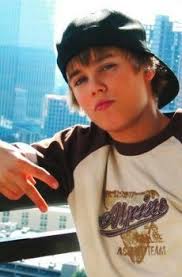
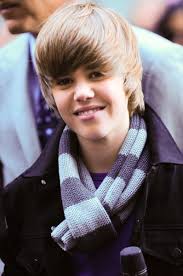

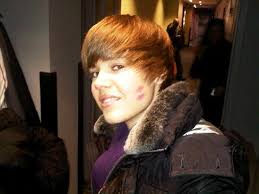


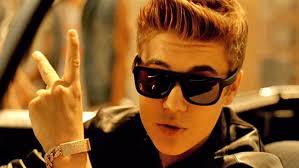
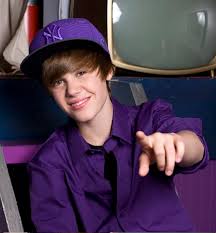
Wallpapers Of Justin Bieber Biography
Justin Bieber was raised by his mother, Pattie Mallette, in Ontario, Canada. At the age of 12, he entered a local singing competition and came second. Bieber went on to teach himself to play the guitar, drums and the trumpet.
With the help of his mother, Bieber then started to post videos on YouTube of his own covers of songs by artists such as Chris Brown, Usher, Justin Timberlake and Stevie Wonder. These videos were seen by the record company executive Scooter Braun, who flew Bieber to Atlanta to meet and perform in front of Usher. Eventually, he was signed to Island Records. Bieber moved to Atlanta with his mother, so that Justin could work more closely with Usher and Braun.
In 1712, during the reign of Queen Anne, a wallpaper tax was introduced which was not abolished until 1836. By the mid-eighteenth century, Britain was the leading wallpaper manufacturer in Europe, exporting vast quantities to Europe in addition to selling on the middle-class British market. However this trade was seriously disrupted in 1755 by the Seven Years War and later the Napoleonic Wars, and by a heavy level of duty on imports to France.
In 1748 the British Ambassador to Paris decorated his salon with blue flock wallpaper, which then became very fashionable there. In the 1760s the French manufacturer Jean-Baptiste Réveillon hired designers working in silk and tapestry to produce some of the most subtle and luxurious wallpaper ever made. His sky blue wallpaper with fleurs-de-lys was used in 1783 on the first balloons by the Montgolfier brothers. The landscape painter Jean-Baptiste Pillement discovered in 1763 a method to use fast colours.
Hand-blocked wallpapers like these use hand-carved blocks and by the 18th century designs include panoramic views of antique architecture, exotic landscapes and pastoral subjects, as well as repeating patterns of stylized flowers, people and animals.
In 1785 Christophe-Philippe Oberkampf had invented the first machine for printing coloured tints on sheets of wallpaper. In 1799 Louis-Nicolas Robert patented a machine to produce continuous lengths of paper, the forerunner of the Fourdrinier machine. This ability to produce continuous lengths of wallpaper now offered the prospect of novel designs and nice tints being widely displayed in drawing rooms across Europe.
The original Macintosh operating system only allowed a selection of 8×8-pixel binary-image tiled patterns; the ability to use small color patterns was added in System 5 in 1987. MacOS 8 in 1997 was the first Macintosh version to include built-in support for using arbitrary images as desktop pictures, rather than small repeating patterns.
Windows 3.0 in 1990 was the first version of Microsoft Windows to come with support for wallpaper customization, and used the term "wallpaper" for this feature. Although Windows 3.0 only came with 7 small patterns (2 black-and-white and 5 16-color), the user could supply other images in the BMP file format with up to 8-bit color (although the system was theoretically capable of handling 24-bit color images, it did so by dithering them to an 8-bit palette). In the same year, third-party freeware was available for the Macintosh and OS/2 to provide similar wallpaper features otherwise lacking in those systems. A wallpaper feature was added in a beta release of OS/2 2.0 in 1991.
With the help of his mother, Bieber then started to post videos on YouTube of his own covers of songs by artists such as Chris Brown, Usher, Justin Timberlake and Stevie Wonder. These videos were seen by the record company executive Scooter Braun, who flew Bieber to Atlanta to meet and perform in front of Usher. Eventually, he was signed to Island Records. Bieber moved to Atlanta with his mother, so that Justin could work more closely with Usher and Braun.
In 1712, during the reign of Queen Anne, a wallpaper tax was introduced which was not abolished until 1836. By the mid-eighteenth century, Britain was the leading wallpaper manufacturer in Europe, exporting vast quantities to Europe in addition to selling on the middle-class British market. However this trade was seriously disrupted in 1755 by the Seven Years War and later the Napoleonic Wars, and by a heavy level of duty on imports to France.
In 1748 the British Ambassador to Paris decorated his salon with blue flock wallpaper, which then became very fashionable there. In the 1760s the French manufacturer Jean-Baptiste Réveillon hired designers working in silk and tapestry to produce some of the most subtle and luxurious wallpaper ever made. His sky blue wallpaper with fleurs-de-lys was used in 1783 on the first balloons by the Montgolfier brothers. The landscape painter Jean-Baptiste Pillement discovered in 1763 a method to use fast colours.
Hand-blocked wallpapers like these use hand-carved blocks and by the 18th century designs include panoramic views of antique architecture, exotic landscapes and pastoral subjects, as well as repeating patterns of stylized flowers, people and animals.
In 1785 Christophe-Philippe Oberkampf had invented the first machine for printing coloured tints on sheets of wallpaper. In 1799 Louis-Nicolas Robert patented a machine to produce continuous lengths of paper, the forerunner of the Fourdrinier machine. This ability to produce continuous lengths of wallpaper now offered the prospect of novel designs and nice tints being widely displayed in drawing rooms across Europe.
The original Macintosh operating system only allowed a selection of 8×8-pixel binary-image tiled patterns; the ability to use small color patterns was added in System 5 in 1987. MacOS 8 in 1997 was the first Macintosh version to include built-in support for using arbitrary images as desktop pictures, rather than small repeating patterns.
Windows 3.0 in 1990 was the first version of Microsoft Windows to come with support for wallpaper customization, and used the term "wallpaper" for this feature. Although Windows 3.0 only came with 7 small patterns (2 black-and-white and 5 16-color), the user could supply other images in the BMP file format with up to 8-bit color (although the system was theoretically capable of handling 24-bit color images, it did so by dithering them to an 8-bit palette). In the same year, third-party freeware was available for the Macintosh and OS/2 to provide similar wallpaper features otherwise lacking in those systems. A wallpaper feature was added in a beta release of OS/2 2.0 in 1991.
Wallpapers Of Justin Bieber
Wallpapers Of Justin Bieber
Wallpapers Of Justin Bieber
Wallpapers Of Justin Bieber
Wallpapers Of Justin Bieber
Wallpapers Of Justin Bieber
Wallpapers Of Justin Bieber
Wallpapers Of Justin Bieber
Wallpapers Of Justin Bieber
Wallpapers Of Justin Bieber
Wallpapers Of Justin Bieber
Wallpapers Of Justin Bieber
Wallpapers Of Justin Bieber
No comments:
Post a Comment